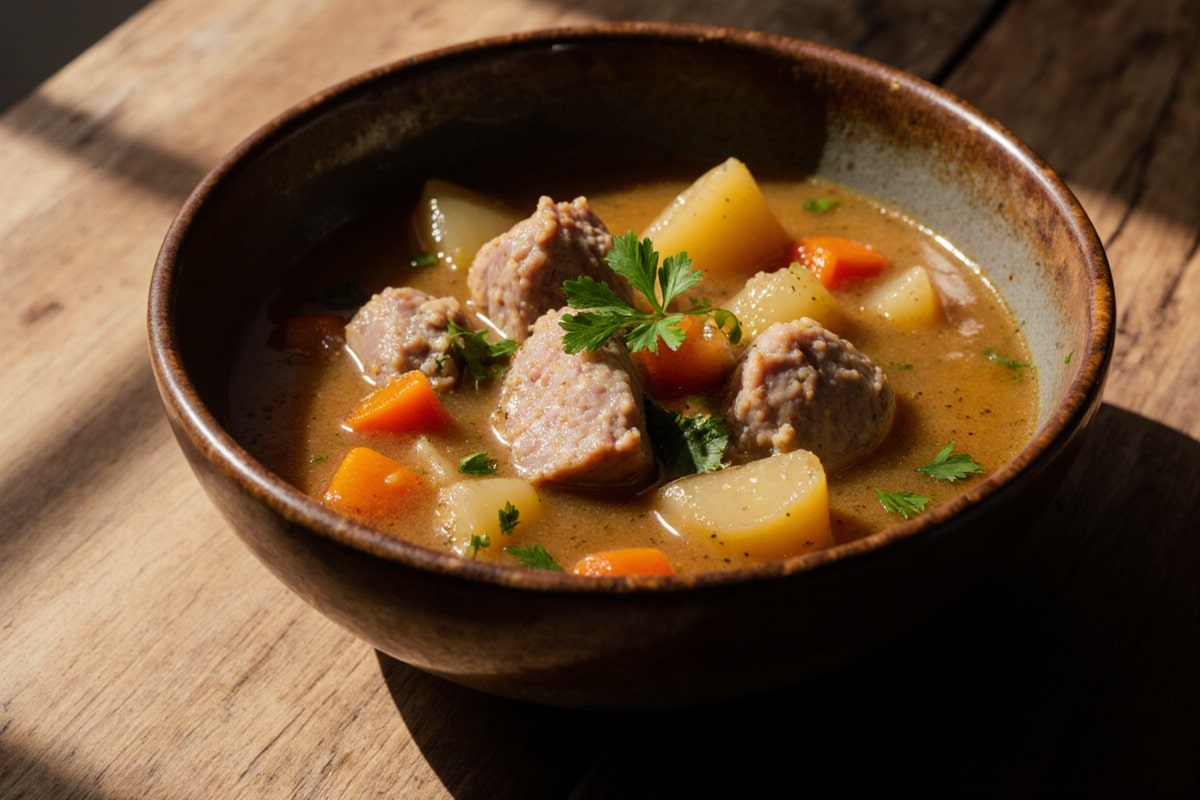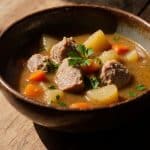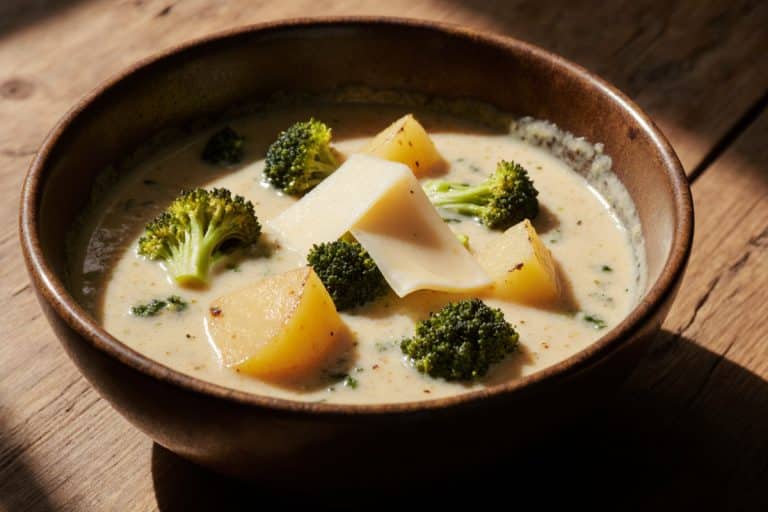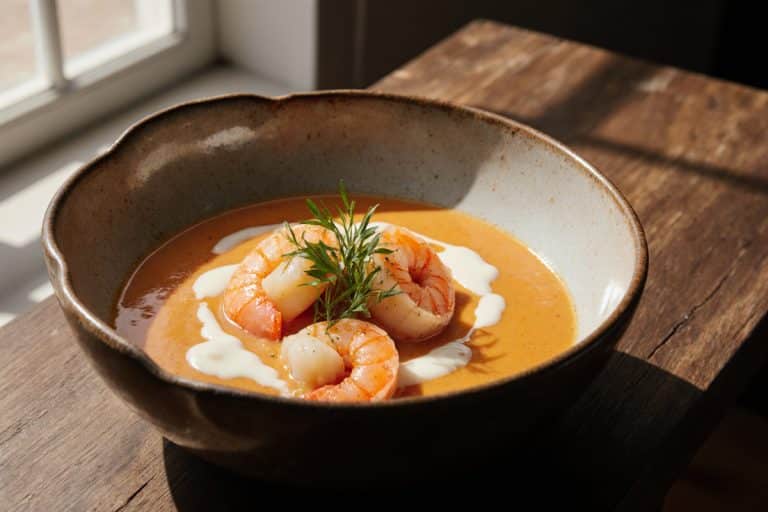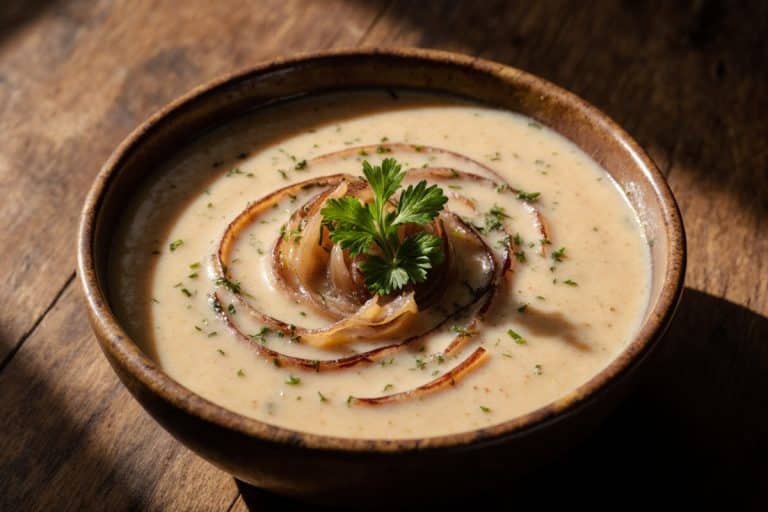Gordon Ramsay Turkey Soup
Gordon Ramsay turkey soup is a game changer in the world of comfort food. Picture this: you’ve just devoured a massive Thanksgiving feast, and now you’re staring at a mountain of leftover turkey, feeling like it’s a burden. But here’s the kicker — instead of letting it go to waste, you can transform that turkey into a rich, satisfying soup that warms your soul. With Ramsay’s techniques, you’ll elevate simple ingredients into a flavor-packed masterpiece. It’s all about smart cooking, bold seasoning, and a little patience. Trust me, once you nail this recipe, you’ll feel like a culinary rockstar, ready to tackle any kitchen challenge that comes your way.
Gordon Ramsay’s Turkey Soup
Ingredients
Equipment
Method
- Start by picking the meat from your turkey carcass, shredding any leftover turkey meat into bite-sized pieces, and setting it aside.
- Roast the bones at 200°C (400°F) for 20–30 minutes until golden brown. Cover with cold water in a large pot, add onions, celery, carrots, herbs, and peppercorns. Simmer for 3–4 hours.
- Heat olive oil in a separate pan over medium heat. Add chopped onion, leeks, celery, and carrots, sweating for about 6–8 minutes until translucent.
- Strain your stock into the pan with sweated vegetables and let it simmer for 10–15 minutes. Add shredded turkey in the last 1–2 minutes to warm through. Finish with fresh parsley and a squeeze of lemon juice.
Nutrition
Notes
Love this recipe?
Give us 5 stars and comment!Introduction to Gordon Ramsay’s Turkey Soup
Why this recipe stands out
Gordon Ramsay’s turkey soup isn’t just any ordinary soup; it’s all about flavor and using what you have. This recipe takes leftover turkey and turns it into a warm, comforting dish that feels like a hug. The rich flavor comes from simmering a hearty stock with fresh herbs and veggies, perfect for those chilly nights or when you’re under the weather.
Using leftover turkey smartly
Let’s be honest: after a big holiday meal, leftover turkey can feel overwhelming. But with Ramsay’s recipe, you can turn that leftover turkey into something special. By using the carcass to make a flavorful broth, you minimize waste while maximizing taste. It’s all about smart cooking, and this recipe gets it right.
Ramsay-inspired techniques and philosophy
Ramsay believes in bold seasoning and precise heat control. In this turkey soup, you’ll learn to build flavors by sweating vegetables and roasting bones, which adds character to your stock. Always remember to season boldly and adjust as you go. Your goal is to create a soup that’s bright, flavorful, and satisfying.
Reader expectations and goals
When you make Gordon Ramsay’s turkey soup, you’ll pick up useful cooking techniques while enjoying a hearty meal. Aim to create a dish that not only tastes amazing but also showcases your cooking skills. With practice, you’ll master the balance of flavors and textures, making this soup a mainstay in your kitchen.
Ingredients & Nutrition
Typical ingredients baseline
For a delicious Gordon Ramsay turkey soup, gather these essentials: a turkey carcass, onion, celery, carrots, bay leaf, thyme, parsley stems, peppercorns, garlic, olive oil, and leftover turkey meat. These ingredients work together to create a comforting, nutritious dish.
Optional additions and substitutions
Feel free to get creative! You can add leeks for sweetness, zucchini for a fresh taste, or leafy greens like kale or spinach for more nutrition. Toss in some smoked paprika or Worcestershire sauce for a smoky flavor. If you want to make it heartier, consider mixing in some cooked grains like rice or barley. The beauty of this soup is its flexibility.
Nutrition per 100 g
When it comes to nutrition, Gordon Ramsay’s turkey soup is a star. Per 100 g, you can expect about 40–60 calories, 4–6 g of protein, 1–2 g of fat, and 3–5 g of carbohydrates. It’s also loaded with fiber and essential nutrients, including Vitamin A, potassium, and iron from the turkey. This soup is a healthy choice packed with flavor.
Nutrition per serving
A typical serving size of about 350 ml (1.5 cups) contains roughly 150–220 calories, 12–18 g of protein, 3–5 g of fat, and 10–15 g of carbohydrates. It’s a filling yet light option, perfect for a cozy meal any day of the week.
Step-by-Step Method
Prepare meat from turkey carcass
Start by picking the meat from your turkey carcass. This is where the magic starts! Shred any leftover turkey meat into bite-sized pieces and set it aside. Don’t toss that carcass—it’s the secret to your flavorful broth.
Make stock with bone-roasting tip
Roast the bones at 400°F (200°C) for 20–30 minutes until they’re golden brown. This step is key for enhancing the flavor of your stock. After roasting, cover the bones with cold water in a large pot, adding onions, celery, carrots, herbs, and peppercorns. Bring it to a gentle simmer and let it work its magic for 3–4 hours.
Sweat base vegetables
In another pan, heat some olive oil over medium heat. Add chopped onion, leeks, celery, and carrots, sweating them for about 6–8 minutes until they turn translucent. This step really boosts the flavors and sets a solid foundation for your soup.
Build the soup and finish
Once your stock is ready, strain it into the pan with your sweated vegetables. Let it simmer for 10–15 minutes to meld those flavors. In the last minute or so of cooking, add your shredded turkey just to warm it through. Finish with a sprinkle of fresh parsley and a squeeze of lemon juice for a burst of flavor.
Ramsay Techniques & Common Mistakes
Ramsay-style techniques
Use Ramsay’s tips to enhance your turkey soup. Start by roasting the bones for extra depth, and remember to simmer gently, don’t boil your stock to keep it clear. Sweating your vegetables opens up their flavors, and layering in herbs throughout the cooking process gives your soup that extra kick. Always finish with a touch of brightness from fresh herbs or citrus.
Common mistakes & fixes
Avoid mistakes like cloudy broth by simmering gently and skimming any foam that forms. If your broth tastes under-seasoned, taste often and add salt a little at a time; Ramsay stresses bold seasoning. To prevent overcooked vegetables, consider cooking them separately or adding them in stages. Lastly, add the turkey only at the end to keep it tender.
Variations & Serving Suggestions
Variations
Looking to change things up? Add a dash of smoked paprika or Worcestershire sauce for a umami kick. Incorporate grains like rice, barley, or small pasta to make it heartier. You can also stir in leafy greens like kale or spinach in the last few minutes for added nutrition. The variations are endless, so have fun with it!
Seasonal vegetable swaps and additions
Take advantage of seasonal veggies by swapping in fennel for depth or zucchini for a refreshing crunch. Mixing in seasonal greens will add color and boost the nutritional value of your soup.
Finishing touches
Don’t skip the finishing touches! A handful of fresh parsley and a squeeze of lemon juice can elevate the flavors beautifully. These simple additions can take your turkey soup from good to spectacular.
Good side dishes
Serve your turkey soup with crusty bread or garlic toast for a satisfying meal. A light green salad with vinaigrette balances the richness of the soup, and simply roasted root vegetables make a hearty side. These options will round out your dining experience perfectly.
Pureed version option
If you’re looking for a different texture, consider making a pureed version of your turkey soup. Blend in roasted squash or tomatoes to create a silky, smooth consistency. This variation adds a new layer of flavor while keeping the essence of the dish intact.
Timing, Temperature & Stock Assembly
Roast bones: 400°F (200°C) for 20–30 minutes
Roasting your bones at 400°F (200°C) for 20–30 minutes is important for building that rich flavor base. Keep an eye on them; they should be golden and fragrant, ready to create a delicious stock.
Stock simmer: 3–4 hours (keep at bare simmer, do not boil)
Let your stock simmer gently for 3–4 hours to let those flavors develop. This is where the real magic happens—simmering instead of boiling keeps your broth clear and flavorful. Skim off any foam that rises for the best results.
Sweat vegetables: 6–8 minutes until translucent
Sweat your base vegetables for about 6–8 minutes until they turn translucent. This step is crucial for unlocking their natural sugars and flavors, which enhance the overall taste of your turkey soup.
Final assembly: add turkey last 1–2 minutes; gentle heat; finish with salt, pepper, herbs, and lemon
For the final assembly, add your shredded turkey in the last 1–2 minutes to warm it through without overcooking. Use gentle heat and finish with a good seasoning of salt, pepper, fresh herbs, and a splash of lemon juice for that perfect touch.
Did you know there are many different variations of turkey soup? Check out this turkey soup resource for more inspiration!
Video tutorial: turkey soup

FAQ – gordon ramsay turkey soup
Question: Can I make Gordon Ramsay’s turkey soup using raw turkey bones?
Answer: Yes! Roasting the bones first at 400°F for 20–30 minutes develops a deeper flavor before you simmer the stock. Don’t skip this crucial step!
Question: How long should I simmer the turkey stock?
Answer: You’ll want to simmer it gently for 3–4 hours. This allows the flavors to develop beautifully — just remember to skim off any foam for a clear broth.
Question: When do I add leftover turkey meat to the soup?
Answer: Add your shredded turkey in the last 1–2 minutes just to warm it through. Overcooking it will dry it out and nobody wants that!
Question: What if I don’t have a turkey carcass?
Answer: No worries! You can use a chicken carcass or high-quality chicken stock as a substitute, but just know the turkey flavor will be a bit less robust.
Question: How to make the soup healthy without losing flavor?
Answer: Load it up with vegetables and leafy greens, use minimal oil, and control the salt. Finish with fresh lemon juice and herbs for that bright kick!
Conclusion
There you have it — Gordon Ramsay turkey soup is not just a recipe; it’s a journey into flavor town. With every spoonful, you’ll feel the warmth of the broth and the satisfaction of knowing you’ve turned those leftovers into something spectacular. The rich aroma wafting through your kitchen, the vibrant colors of the vegetables, and the tender turkey pieces all come together to create a dish that screams comfort. Remember, cooking is all about confidence, and now you have the tools to make it bold and uniquely yours. So roll up those sleeves and get ready to impress — because now it’s your turn to make it happen!

